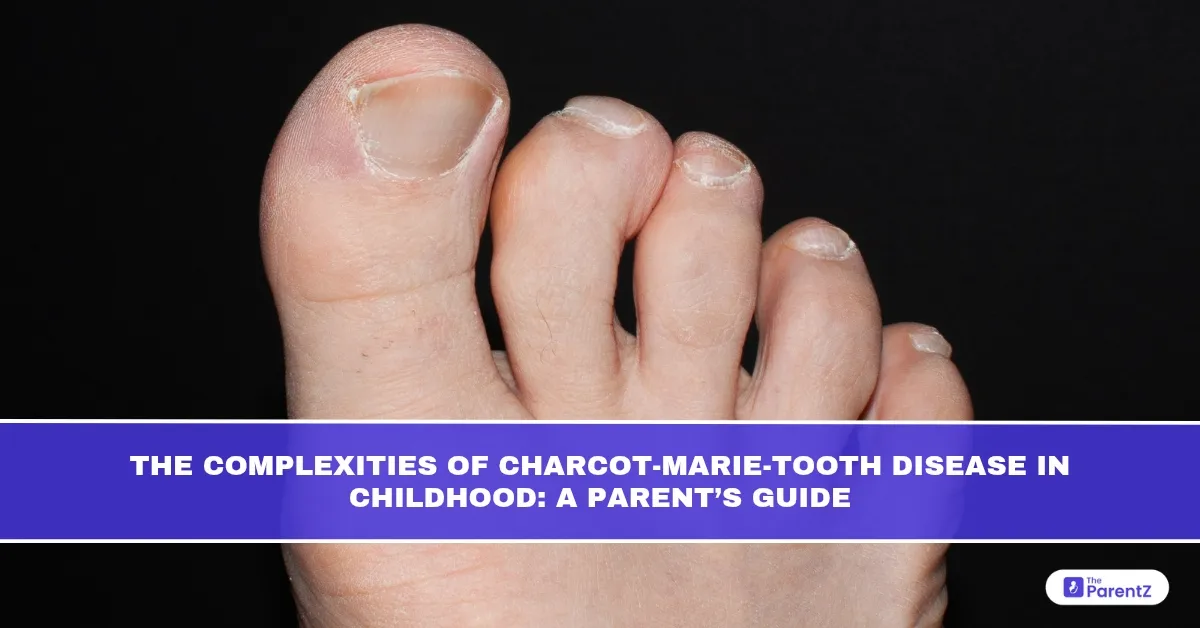What Every Parent Should Know
As a parent, it’s natural to notice the tiniest changes in your child, how they walk, run, or grip a pencil. But sometimes, what appears to be clumsiness or muscle weakness could be something more. One such condition, often misunderstood and overlooked in its early stages, is Charcot-Marie-Tooth disease (CMT).
CMT is a group of inherited disorders that affect peripheral nerves, the ones outside the brain and spinal cord. While the name might sound intimidating (it’s named after the three doctors who first described it), understanding it can empower you to better care for and support your child.
What is Charcot-Marie-Tooth Disease?
Charcot-Marie-Tooth disease is a genetic neuromuscular disorder that primarily affects the motor and sensory nerves, which are responsible for muscle control and feeling in the limbs.
CMT causes these peripheral nerves to either degenerate or function abnormally, leading to muscle weakness, reduced muscle size (especially in the lower legs and feet), and sometimes numbness or tingling.
There are many types of CMT, with varying severity and symptoms. Most forms are inherited, meaning the condition runs in families, although it can also appear in a child with no family history due to a new genetic mutation.
When and How Does CMT Show Up in Children?
Symptoms can appear at different stages in childhood, depending on the type and severity. Some children may show signs in early toddlerhood, while others may not have noticeable symptoms until their teenage years.
Common early signs include:
- Frequent tripping or falling
- High arches or flat feet
- Difficulty running or climbing stairs
- Unusual gait (walking pattern)
- Weak grip or trouble with fine motor skills like buttoning a shirt
- Fatigue after physical activity
- Curled toes (hammertoes) or foot deformities
CMT progresses slowly and typically doesn’t affect lifespan, but it can impact a child’s mobility, confidence, and daily functioning.
How is CMT Diagnosed?
Diagnosis often begins with a detailed medical history and neurological exam by a pediatrician or neurologist. If CMT is suspected, the doctor may recommend:
- Nerve conduction studies: To measure how fast signals travel through the nerves.
- Electromyography (EMG): To check muscle responses.
- Genetic testing: To confirm the specific type of CMT.
- Family history analysis: Since CMT is inherited, understanding who else in the family has symptoms can help.
Getting an accurate diagnosis may take time and several specialist visits, but it is crucial for creating a proper care plan.
Living with CMT: What Can Parents Expect?
While there’s no cure for CMT, there are many ways to manage symptoms and improve quality of life. Most children with CMT go to regular schools, make friends, and participate in daily activities with a few extra supports.
Here’s what management often looks like:
1. Physical Therapy
Regular exercises help maintain muscle strength and flexibility. A physical therapist can guide safe workouts that prevent muscle tightening and keep joints moving smoothly.
2. Occupational Therapy
These therapists focus on fine motor skills—helping children write, dress, use utensils, and perform daily activities with greater ease.
3. Orthopedic Support
Braces, specially designed shoes, or custom inserts may be used to support weak ankles and feet, improving balance and reducing falls.
4. Regular Monitoring
Because symptoms can evolve, regular check-ups with a neurologist and orthopedic specialist are key. Monitoring helps prevent complications like foot deformities or spinal curvature (scoliosis).
5. Emotional and Social Support
Kids with physical differences sometimes feel left out or frustrated. Encouraging open conversations, involving teachers, and connecting with support groups can foster resilience and emotional health.
Supporting Your Child at Home and School
Being a parent of a child with CMT means playing many roles: advocate, encourager, and sometimes detective. Here are ways to help:
- Build a supportive routine: Include time for rest and exercise. Kids with CMT may tire more easily, so breaks and pacing matter.
- Adapt their environment: Non-slip rugs, handrails, and easy-to-grip utensils can prevent accidents and boost independence.
- Talk to teachers: Help educators understand that your child may need longer to complete tasks, may benefit from assistive devices, or might need extra time between classes.
- Celebrate strengths: Your child is more than a diagnosis. Focus on what they enjoy and do well—be it music, storytelling, or solving puzzles.
Genetic Counseling: Planning for the Future
Because CMT is inherited, you may be advised to meet with a genetic counselor. This specialist can help you understand:
- The risk of passing CMT to future children
- The chances your child may pass it on when they grow up
- Family planning options, if applicable
Knowing the genetic background allows for informed decisions—not fear.
Hope on the Horizon
Though there’s no cure yet, research is advancing. Scientists are exploring gene therapies, drug trials, and nerve regeneration techniques. Clinical studies are also investigating how to slow or reverse nerve damage.
Families affected by CMT can join research registries or participate in fundraising and awareness events that drive change and hope.
Final Thoughts: You’re Not Alone
CMT may sound complex, but you are not alone in navigating it. With the right tools, early intervention, and lots of love, children with CMT can thrive. They can grow into independent adults with fulfilling lives, just with a slightly different set of challenges.
As a parent, your awareness, adaptability, and encouragement make a world of difference. Keep asking questions, seeking help, and cheering on your child. Together, you’re building a strong, confident future step by determined step.








Be the first one to comment on this story.